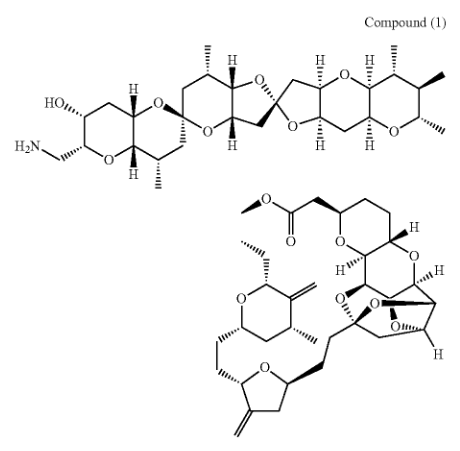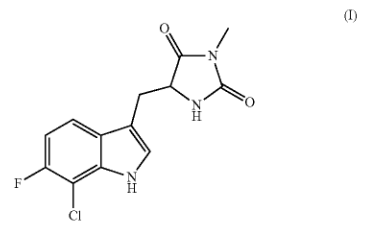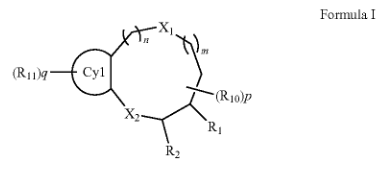News All News
April 30th, 2018
April 2018 patents
Innovations in slippery surfaces, biomaterials to modulate immune response, anti-counterfeiting, metalenses, inhibitors of cellular necrosis, bacterial delivery of polypeptides, and more
Harvard faculty David Edwards, Jose Halperin, Michael Chorev, Joanna Aizenberg, Don Ingber, David Mooney, Yoshito Kishi, Federico Capasso, Ronald Walsworth, Junying Yuan, Stuart Schreiber, Peng Yin, George Whitesides, Connie Cepko, Greg Verdine, and Amy Wagers are among the inventors issued U.S. patents in April 2018.
The innovations recognized are as follows:
Systems, methods and articles to provide olfactory sensations
U.S. Patent 9,931,425 (April 3, 2018)
David A. Edwards, Rachel Diane Field, Amy Michelle Yin, and Eyal Shahar
Abstract: A system to provide scents includes a scent receiver to replaceable receive scent carriers that carry scent media, a scent actuator operable to controllable release scent, and a configurable circulation subsystem. Peltier devices may used to induce active heating and active cooling of scent media according to defined scent sequence information or scent tracks. The system is also operable to collect air, including scents, from an ambient environment, and temporarily retaining such for sampling by a user. Scent tracks may be defined and shared amongst users and other entities.
N,N'-diarylurea compounds and N,N'-diarylthiourea compounds as inhibitors of translation initiation
U.S. Patent 9,932,300 (April 3, 2018)
Bertal Huseyin Aktas, Jose A. Halperin, and Michael Chorev
Abstract: Compositions and methods for inhibiting translation initiation are provided. Compositions, methods and kits for treating (1) cellular proliferative disorders, (2) non-proliferative, degenerative disorders, (3) viral infections, and/or (4) disorders associated with viral infections, using N,N'-diarylureas and/or N,N'-diarylthiourea compounds are described.
Slippery surfaces with high pressure stability, optical transparency, and self-healing characteristics
U.S. Patent 9,932,482 (April 3, 2018)
Joanna Aizenberg, Michael Aizenberg, Sung Hoon Kang, Philseok Kim, and Tak Sing Wong
Abstract: The present disclosure describes a strategy to create self-healing, slippery liquid-infused porous surfaces (SLIPS). Roughened (e.g., porous) surfaces can be utilized to lock in place a lubricating fluid, referred to herein as Liquid B to repel a wide range of materials, referred to herein as Object A (Solid A or Liquid A). SLIPS outperforms other conventional surfaces in its capability to repel various simple and complex liquids (water, hydrocarbons, crude oil and blood), maintain low-contact-angle hysteresis (<2.5°), quickly restore liquid-repellency after physical damage (within 0.1-1 s), resist ice, microorganisms and insects adhesion, and function at high pressure (up to at least 690 atm). Some exemplary application where SLIPS will be useful include energy-efficient fluid handling and transportation, optical sensing, medicine, and as self-cleaning, and anti-fouling materials operating in extreme environments.
Slippery liquid-infused porous surfaces and biological applications thereof
U.S. Patent 9,932,484 (April 3, 2018)
Joanna Aizenberg, Benjamin Hatton, Donald Ingber, Michael Super, and Tak Sing Wong
Abstract: A self-healing, scratch resistant slippery surface that is manufactured by wicking a chemically-inert, high-density liquid coating over a roughened solid surface featuring micro and nanoscale topographies is described. Such a slippery surface shows anti-wetting properties, as well as exhibits significant reduction of adhesion of a broad range of biological materials, including particles in suspension or solution. Specifically, the slippery surfaces can be applied to medical devices and equipment to effectively repel biological materials such as blood, and prevent, reduce, or delay coagulation and surface-mediated clot formation. Moreover, the slippery surfaces can be used to prevent fouling by microorganisms such as bacteria.
Mesoporous silica compositions for modulating immune responses
U.S. Patent 9,937,249 (April 10, 2018)
Jaeyun Kim, Weiwei Aileen Li, and David J. Mooney
Abstract: A composition comprising mesoporous silica rods comprising an immune cell recruitment compound and an immune cell activation compound, and optionally comprising an antigen such as a tumor lysate. The composition is used to elicit an immune response to a vaccine antigen.
Anti-counterfeiting methods
U.S. Patent 9,937,743 (April 10, 2018)
Joanna Aizenberg, Tak Sing Wong, Sung Hoon Kang, and Ximin He
Abstract: A document and an Anti-counterfeiting method for use in such documents are described. Said document and Anti-counterfeiting method include introducing a plurality of raised nanoscopic to microscopic structures, here referred to as reconfigurable structures, formed over a polymer substrate to induce optical changes, such as structural color and/or optical fuzziness. Dynamic changes using liquids provide the anti-counterfeiting measures.
Macrocyclic compound and uses thereof
U.S. Patent 9,938,288 (April 10, 2018)
Yoshito Kishi, Kazunobu Kira, and Ken Ito
Abstract: The present invention provides novel Compound (1) having tumor vascular remodeling effect and/or anti-CAF (Cancer Associated Fibroblasts) activity, or a pharmaceutically acceptable salt thereof, optionally in a pharmaceutically acceptable carrier, and a medical uses thereof.

Collimating metalenses and technologies incorporating the same
U.S. Patent 9,939,129 (April 10, 2018)
Steve Byrnes, Francesco Aieta, Federico Capasso, and Alan Lenef
Abstract: Metalenses and technologies incorporating the same are disclosed. In some embodiments, the metalenses are in the form of a hybrid multiregion collimating metalens that includes a first region and a second region, wherein the hybrid multiregion collimating metalens is configured to collimate (e.g., visible) light incident thereon. In some instances the first region includes an array of first unit cells that contain subwavelength spaced nanostructures, such that the first region functions as a subwavelength high contrast grating (SWHCG), whereas the second region includes an array of second unit cell, wherein the array of second unit cells includes a near periodic annular arrangement of nanostructures such that the second region approximates the functionality of a locally periodic radial diffraction grating. Lighting devices including such metalenses are also disclosed.
Use of nuclear spin impurities to suppress electronic spin fluctuations and decoherence in composite solid-state spin systems
U.S. Patent 9,939,510 (April 10, 2018)
Ronald L. Walsworth, Nir Bar-Gill, Chinmay Belthangady, and Linh My Pham
Abstract: A solid state electronic spin system contains electronic spins disposed within a solid state lattice and coupled to an electronic spin bath and a nuclear spin bath, where the electronic spin bath composed of electronic spin impurities and the nuclear spin bath composed of nuclear spin impurities. The concentration of nuclear spin impurities in the nuclear spin bath is controlled to a value chosen so as to allow the nuclear spin impurities to effect a suppression of spin fluctuations and spin decoherence caused by the electronic spin bath. Sensing devices such as magnetic field detectors can exploit such a spin bath suppression effect, by applying optical radiation to the electronic spins for initialization and readout, and applying RF pulses to dynamically decouple the electronic spins from the electronic spin bath and the nuclear spin bath.
Inhibitors of cellular necrosis and related methods
U.S. Patent 9,944,628 (April 17, 2018)
Junying Yuan, Yijun Zhou, Shan Qian, and Dawei Ma
Abstract: A compound having the following structure (I):

or a pharmaceutically acceptable salt, prodrug, stereoisomer or tautomer thereof, is provided. Related compounds, methods for preparation of the same and uses of the compounds for treatment of various indications, including treatment of necrotic cell diseases and/or inflammation, are also provided.
Compounds and methods for the treatment of isocitrate dehydrogenase related diseases
U.S. Patent 9,944,633 (April 17, 2018)
Mahmud Hussain, Daisuke Ito, Jason Law, Matthias Leiendecker, Ke Liu, Benito Munoz, Stuart Schreiber, Alykhan Shamji, and Andrew Stern
Abstract: The invention relates to compounds of Formula I or a pharmaceutically acceptable salt, ester or prodrug thereof:

High-throughput and highly multiplexed imaging with programmable nucleic acid probes
U.S. Patent 9,944,972 (April 17, 2018)
Peng Yin, Sarit Agasti, Xi Chen, and Ralf Jungmann
Abstract: The present invention provides, inter alia, methods and compositions for imaging, at high spatial resolution, targets of interest.
Systems and methods for actuating soft robotic actuators
U.S. Patent 9,945,397 (April 17, 2018)
Robert F. Shepherd, Adam Stokes, Stephen A. Morin, Ludovico Cademartiri, Jacob Freake, Rui Nunes, Xin Chen, and George M. Whitesides
Abstract: Systems and methods for providing a soft robot is provided. In one system, a robotic device includes a flexible body having a fluid chamber, where a portion of the flexible body includes an elastically extensible material and a portion of the flexible body is strain limiting relative to the elastically extensible material. The robotic device can further include a pressurizing inlet in fluid communication with the fluid chamber, and a pressurizing device in fluid communication with the pressurizing inlet, the pressurizing device including a reaction chamber configured to accommodate a gas-producing chemical reaction for providing pressurized gas to the pressurizing inlet.
Target molecules for transcriptional control systems
U.S. Patent 9,949,464 (April 24, 2018)
Chung Yiu Jonathan Tang and Constance L. Cepko
Abstract: The invention provides systems to control gene expression or activity using target molecules.
Stabilized compounds having secondary structure motifs
U.S. Patent 9,951,099 (April 24, 2018)
Gregory L. Verdine and Christian E. Schafmeister
Abstract: The present invention provides novel stabilized crosslinked compounds having secondary structure motifs, libraries of these novel compounds, and methods for the synthesis of these compounds libraries thereof. The synthesis of these novel stabilized compounds involves (1) synthesizing a peptide from a selected number of natural or non-natural amino acids, wherein the peptide comprises at least two moieties capable of undergoing reaction to promote carbon-carbon bond formation; and (2) contacting the peptide with a reagent to generate at least one crosslinker and to effect stabilization of a secondary structure motif. The present invention, in a preferred embodiment, provides stabilized p53 donor helical peptides. Additionally, the present invention provides methods for disrupting the p53/MDM2 binding interaction comprising (1) providing a crosslinked stabilized α-helical structure; and (2) contacting the crosslinked stabilized α-helical structure with MDM2.
Methods and uses for ex vivo tissue culture systems
U.S. Patent 9,951,313 (April 24, 2018)
Donald E. Ingber, Yusuke Torisawa, Geraldine Hamilton, Akiko Mammoto, Tadanori Mammoto, and Catherine Spina
Abstract: The technology described herein is directed to methods and devices that can be used to induce functional organ structures to form within an implantation device by implanting it in vivo within the body of a living animal, and allowing cells and tissues to impregnate the implantation device and establish normal microenvironmental architecture and tissue-tissue interfaces. Then the contained cells and tissues can be surgically removed intact and either transplanted into another animal or maintained ex vivo by perfusing it through one or more of the fluid channels with medium and/or gases necessary for cell survival.
Compositions and methods for bacterial delivery of polypeptides
U.S. Patent 9,951,340 (April 24, 2018)
Cammie Lesser, Amy Jo Wagers, and Analise Z. Reeves
Abstract: The methods and compositions described herein relate to the delivery of polypeptides to a target cell, e.g. by utilizing engineered non-pathogenic bacteria comprising a type three secretion system (T3SS) and T3SS-compatible substrates. In one aspect, described herein are non-pathogenic microbial cells that have been engineered to express both a functional type three secretion system (T3SS) and at least one polypeptide that is compatible with the T3SS. Due to the wide variety of polypeptides that can be delivered to a target eukaryotic cell using the compositions and systems described herein, a commensurately wide variety of applications is contemplated, e.g. therapeutics and reprogramming.
Ultra-thin optical coatings and devices and methods of using ultra-thin optical coatings
U.S. Patent 9,952,096 (April 24, 2018)
Mikhail A. Kats, Romain Blanchard, Patrice Genevet, and Federico Capasso
Abstract: A spectral encoder includes a thin layer of lossy dielectric material whose thickness varies transversely from 0 to a thickness of about λ/4n (e.g., <100 nm), where λ is the wavelength of incident radiation and n is the dielectric material's refractive index. The dielectric layer reflects (and/or transmits) light at a wavelength that depends on the layer's thickness. Because the dielectric layer's thickness varies, different parts of the dielectric layer may reflect (transmit) light at different wavelengths. For instance, shining white light on a dielectric layer with a linearly varying thickness may produce a rainbow-like reflected (and/or transmitted) beam. Thus, the spectral encoder maps different wavelengths to different points in space. This mapping can be characterized by a transfer matrix which can be used to determine the spectrum of radiation incident on the spectral encoder from the spatial intensity distribution of the radiation reflected (and/or transmitted) by the spectral encoder.
Cell based quality control bioassays for nutriceutical and medicinal products
U.S. Patent 9,952,200 (April 24, 2018)
Jose A. Halperin, Michael Chorev, and Huseyin Aktas
Abstract: A method for determining the translation initiation inhibitory potency of a composition having an unknown level of translation initiation inhibitory activity which comprises contacting an eI-F2α-WT cell with said composition for a time and at a temperature effective to inhibit proliferation of said cell, measuring the level of inhibition of proliferation of said eIF2α-WT cells induced by said sample and comparing the level of inhibition of proliferation induced by said sample with the level of inhibition of proliferation induced by a standard having a known amount of said activity, the amount of said translation initiation inhibitory activity in said sample being proportional to the level of inhibition of proliferation of said eIF2α-WT cell.
Tags: Issued Patents
Press Contact: Kirsten Mabry | (617) 495-4157
